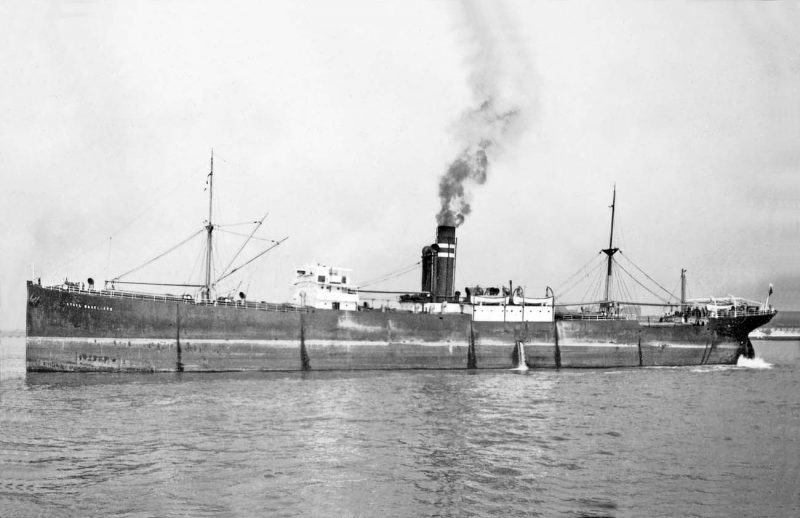
The company was well known in tramp circles as the South Wales British India Line because of their original identical funnel colours. Evan Thomas came from Aberporth which had a substantial fleet of small sailing ships in the middle of the last century.
He then commanded steam tramps trading to the Baltic, Mediterranean, Black Sea and America. He then set up in business with a Merthyr Tydfil businessman Henry Radcliffe, who had gained his shipping experience with Watts, Milburn & Co., Newcastle and J.H. Anning of Cardiff. They ordered a new two masted schooner-rigged steam tramp from Palmers, Jarrow and named her Gwenllian Thomas after the daughter of Evan, who commanded her on her maiden voyage in June 1882. She was registered under a single ship limited liability company as were the first thirty tramps in the fleet. She loaded steam coal at Cardiff for St. Nazaire and then sailed in ballast for Bilbao to load iron ore for Cardiff, repeating this for a while then made three voyages to Gibraltar for copper ore from Huelva for Liverpool. She made occasional voyages on the ‘eternal triangle’ with grain homeward from the Black Sea.
Good profits were made by the first tramp and the fleet expanded to six by 1884. These were named after Evan’s daughters Kate and Ann and his only son Walter and his sister Mary. On the Radcliffe side W.I. Radcliffe was the only son and Clarissa his daughter. The first tramp with a ‘Llan’ prefix was Llanberis of 1890. The fleet had expanded to 15 tramps when Evan died on 14th
November 1891 aged 49 years. Henry Radcliffe then took his younger brother Daniel aged 24 years into partnership with him after years experience with Anning and the Turnbull brothers. The Thomas family ceased to run the business.
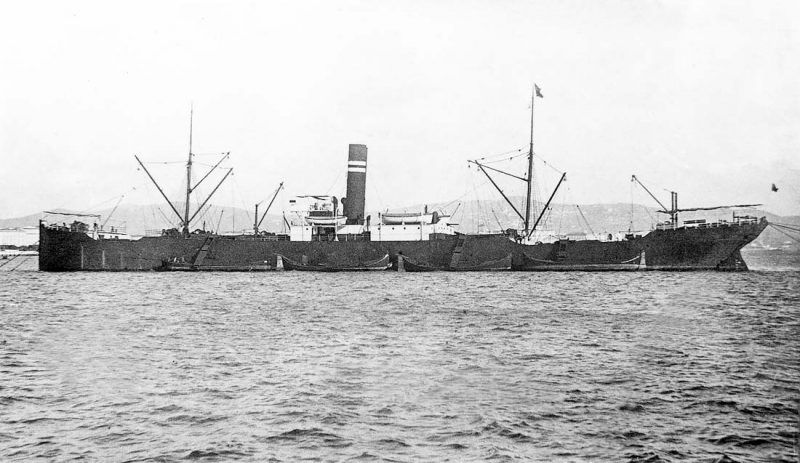
The 3,840grt Llanover was built in 1899 by Richardson Duck at Thornaby. In 1913 she was renamed Paddington then in 1916 the company renamed her Iolo. On 17th February 1917 she was torpedoed and sunk by U-60 SW of Fastnet while on a voyage from Cardiff to La Spezia with a cargo of coal. Two crew members were killed. (John B. Hill collection)
Much of the capital for the rapid expansion of the company had been raised in rural Wales and the ease of obtaining it was a major part of this success. The brother-in-law of Evan, Jenkin David, was a bank manager in Dolgellau and he directed many his customers to invest in the tramps. Rev. J. Cynddylan Jones showed considerable commercial enterprise by being paid 2% of the profits of each tramp in return for persuading members of his congregation to invest!

The company went from strength to strength under Radcliffe control and by the turn of the century had 24 tramps, drawing heavily for crews on the coastal villages of Cardigan Bay. The preferred builder was Ropner of Stockton after Daniel had placed his first order with Turnbull of Whitby out of gratitude to his old employer. Ropner built many tramps for South Wales owners such as William Seager, W.J. Tatem, J.E. Morel, W. Leon and others and these men became directors of the builders. After the turn of the century allegiance switched to Richardson, Duck & Co. Ltd of Stockton for the larger tramps Washington, Patagonia, Picton, of 8,000 dwt of 1906/07. There were three even larger 9,000 dwt tramps from Craig, Taylor & Co. of Stockton between 1911/13 – Wimborne, Windsor and Patagonia. The pattern of trading in the first decade of the century was nearly all ‘eternal triangle’ trading as shown by some voyages between 1906/9:-
Patagonia
- 11.7.1906 Cardiff (coal), Ancona, Odessa (grain), Rotterdam, Barry
- 6.10.1906 Barry (coal), Port Said, Odessa (grain), Hamburg, Cardiff
- 10.1.1907 Cardiff (coal), Port Said, Theodosia & Novorossisk (grain), Hamburg, Barry
- 13.4.1907 Barry (coal), Port Said, Odessa (grain), Nicolaieff (grain), Hamburg, Barry
- 19.7.1907 Barry (coal), Port Said, Odessa (grain), Rotterdam, Barry
- 26.10.1907 Barry (coal), Trieste, Barry
- 19.12.1907 Barry (coal), Port Said, Barry
Llangorse
- 30.9.1907 Barry (coal), Port Said, Odessa & Kherson (grain), Rotterdam
- 8.1.1908 Cardiff (coal), Port Said, Barry
- 6.3.1908 Barry (coal), Port Said, Odessa (grain), Antwerp, Cardiff
- 18.6.1908 Cardiff (coal), Venice, Nicolaieff & Odessa (grain), Rotterdam, Barry
- 11.11.1908 Barry (coal), Port Said, Novorossisk (grain), Rotterdam, Cardiff
- 3.2.1909 Cardiff (coal), Ancona, Nicolaieff (grain), Hamburg, Barry
- 4.6.1909 Barry (coal), Port Said, Barry
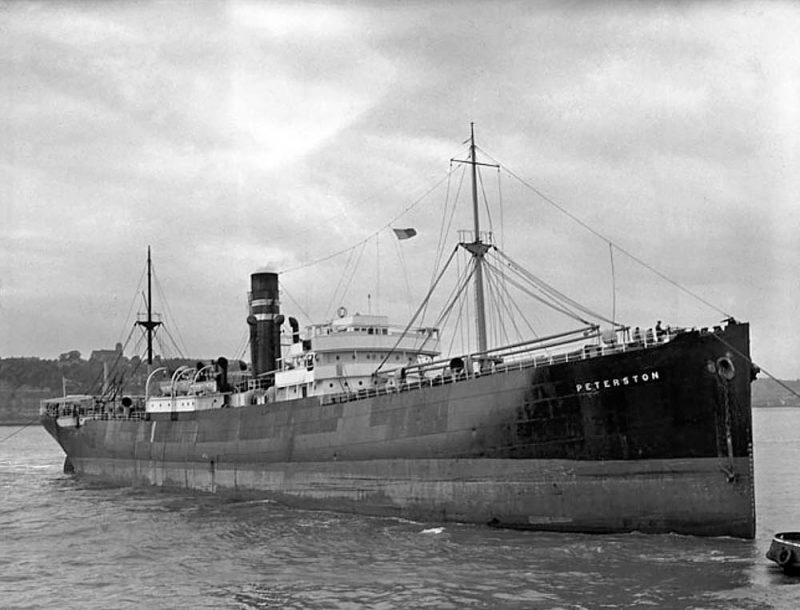
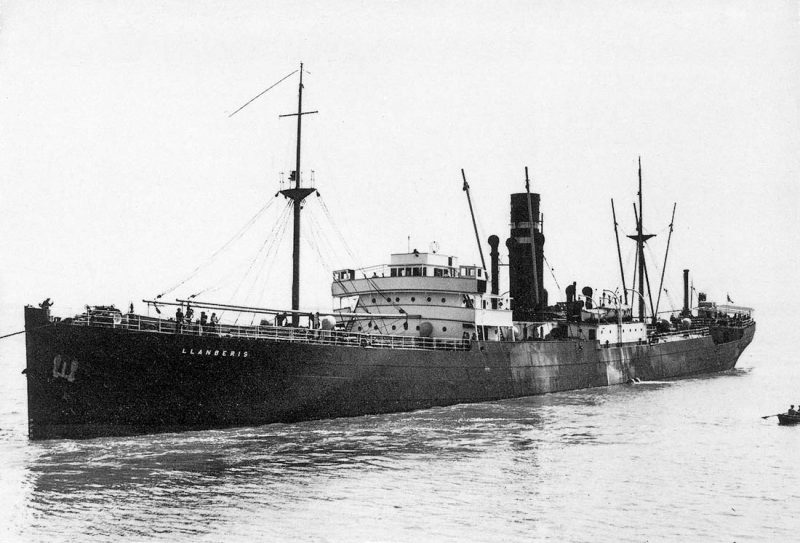
This pattern of trading was repeated with little variation for all Radcliffe tramps until 1912/13 when grain rates homeward from the Black Sea fell off considerably. Gradually this lucrative trade fell away, and was replaced by longer runs to the Gulf of Mexico, Brazil and the Plate which were more suitable for the bigger tramps with their larger bunker capacity. All tramps had full cargoes of Welsh steam coal or Durham household coal out, and coal shipments reached a peak in the years before WWI. At the outbreak the company owned 28 tramps and were the largest Cardiff tramp owner of the time, but 19 of these were to be lost to submarines:-
- 15.9.1915 – Patagonia (1913) 10 miles NE of Odessa
- 21.10.1915 – Windsor (1911) 70 miles SW of Lizard
- 23.7.1916 – Badminton (1899) ex Swindon 63 m NNE of Cape Carbon
- 8.9.1916 – Llangorse (1900) 48 miles WSW of Cape Matapan
- 11.10.1916 – Iolo (1898) ex Paddington 153 m N of Vado, Norway
- 11.11.1916 – Sarah Radcliffe (1896) ex Dunraven 170 m SW of Ushant
- 18.12.1916 – Flimston (1916) 21 miles ENE of Ushant
- 17.2.1917 – Iolo (1899) ex Llandover, Paddington 42 m SW of Fastnet
- 3.5.1917 – Washington (1907) Rapallo Bay, Genoa
- 18.5.1917 – Llandrindod (1900) 165 m WNW of Fastnet
- 21.7.1917 – Paddington (1906) ex Patagonia 250 m W of Fastnet
- 1.8.1917 – Llandudno (1910) Porquerolles Island, Gulf of Lyons
- 8.8.1917 – Llanishen (1901) 8 m NE of Cape de Creus, Gulf of Lyons
- 10.8.1917 – Dunraven (1910} Bay of Biscay as ‘Q’ ship
- 28.10.1917 – Euston (1910) 35 miles SW of Cape Matapan
- 28.11.1917 – Jane Radcliffe (1897) ex Windsor in Aegean Sea
- 6.5.1918 – Llancarvan (1904) ex W.I. Radcliffe 370 miles NE of San Miguel, Azores
- 11.10.1918 – Penistone (1913) 145 miles SSW of Nantucket
- 17.10.1918 – Bonvilston (1893) ex Anthony Radcliffe 9 miles Corsewall Point
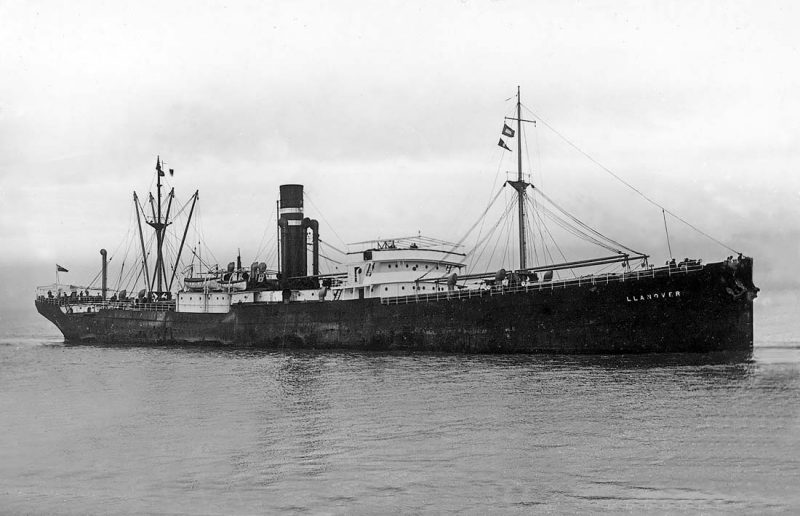
The company was left with 9 tramps but unlike some other owners Radcliffes refrained from entering the very expensive second-hand market in the immediate post-war boom and only one tramp, Ethel Radcliffe, was built. This proved to be the correct policy as half of Cardiff tramp owners went out of business between 1920/22 during the inevitable slump. Ethel Radcliffe cost the enormous sum of £274,019 from Craig, Taylor & Co. Ltd., Stockton and she sailed on her maiden voyage under Capt. Mathias at the end of 1920:-
Ethel Radcliffe
- 11.12.1920 – Barry (coal), Port Said, Mauritius (sugar), London
- 4.6.1921 – London, Norfolk (Va) (coal), Immingham
- 16.8.1921 – Immingham, Texas City (wheat), Antwerp, Cardiff
- 28.10.1921 – Cardiff (coal), Port Said, Cardiff
- 9.12.1921 – Cardiff (coal), Port Said, Baltimore (wheat), Hamburg
- 29.3.1922 – Cardiff (coal), Port Said, Buenos Aires (wheat), Hamburg
- 31.8.1922 – Cardiff (coal), Portland (Me), Galveston (wheat), Genoa, Bahia Blanca (wheat), Genoa, Cardiff
- 22.3.1923 – Cardiff (coal), Hamburg, Barry
- 5.5.1923 – Barry (coal), Port Said, Karachi (grain), Bombay (general), Leith, Antwerp
- 8.9.1923 – Barry (coal), Rio de Janeiro (ore), Baltimore, Norfolk (Va) (grain), Genoa, Bahia Blanca (grain), London, Barry
- 18.4.1924 – Barry (coal), Santos, Rosario (grain), Buenos Aires (grain), Belfast
- 7.11.1924 – Belfast, Galveston (wheat), Genoa, Barry
Subscribe today to read the full article!
Simply click below to subscribe and not only read the full article instantly, but gain unparalleled access to the specialist magazine for shipping enthusiasts.

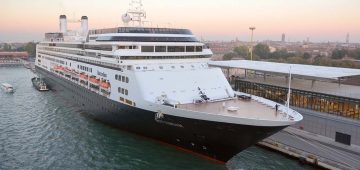




Comments
Sorry, comments are closed for this item